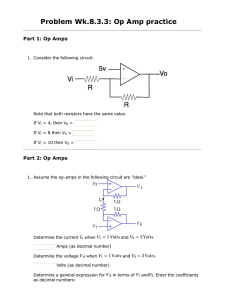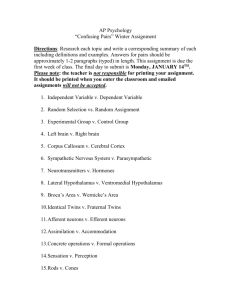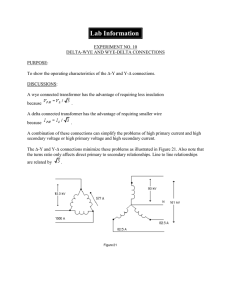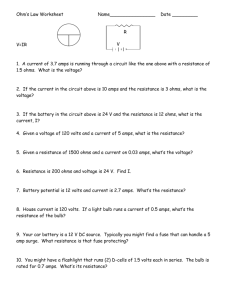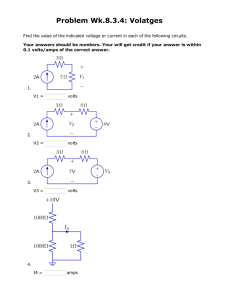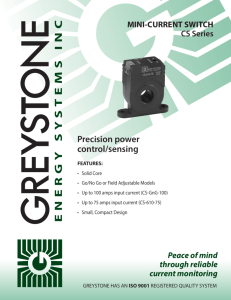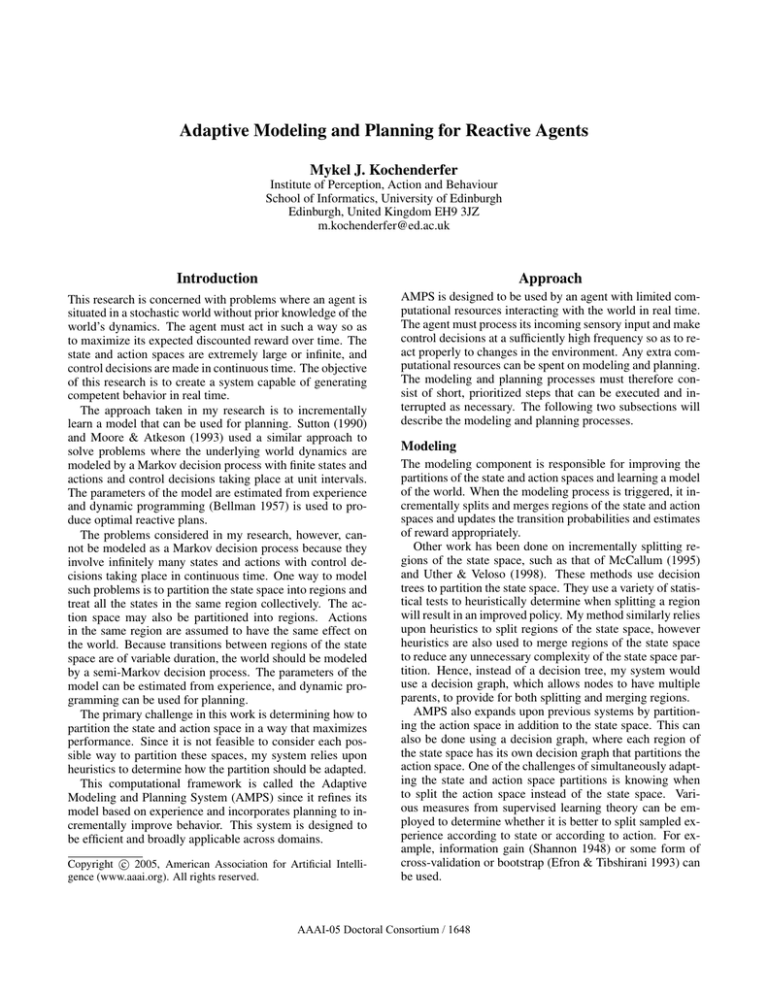
Adaptive Modeling and Planning for Reactive Agents
Mykel J. Kochenderfer
Institute of Perception, Action and Behaviour
School of Informatics, University of Edinburgh
Edinburgh, United Kingdom EH9 3JZ
m.kochenderfer@ed.ac.uk
Introduction
Approach
This research is concerned with problems where an agent is
situated in a stochastic world without prior knowledge of the
world’s dynamics. The agent must act in such a way so as
to maximize its expected discounted reward over time. The
state and action spaces are extremely large or infinite, and
control decisions are made in continuous time. The objective
of this research is to create a system capable of generating
competent behavior in real time.
The approach taken in my research is to incrementally
learn a model that can be used for planning. Sutton (1990)
and Moore & Atkeson (1993) used a similar approach to
solve problems where the underlying world dynamics are
modeled by a Markov decision process with finite states and
actions and control decisions taking place at unit intervals.
The parameters of the model are estimated from experience
and dynamic programming (Bellman 1957) is used to produce optimal reactive plans.
The problems considered in my research, however, cannot be modeled as a Markov decision process because they
involve infinitely many states and actions with control decisions taking place in continuous time. One way to model
such problems is to partition the state space into regions and
treat all the states in the same region collectively. The action space may also be partitioned into regions. Actions
in the same region are assumed to have the same effect on
the world. Because transitions between regions of the state
space are of variable duration, the world should be modeled
by a semi-Markov decision process. The parameters of the
model can be estimated from experience, and dynamic programming can be used for planning.
The primary challenge in this work is determining how to
partition the state and action space in a way that maximizes
performance. Since it is not feasible to consider each possible way to partition these spaces, my system relies upon
heuristics to determine how the partition should be adapted.
This computational framework is called the Adaptive
Modeling and Planning System (AMPS) since it refines its
model based on experience and incorporates planning to incrementally improve behavior. This system is designed to
be efficient and broadly applicable across domains.
AMPS is designed to be used by an agent with limited computational resources interacting with the world in real time.
The agent must process its incoming sensory input and make
control decisions at a sufficiently high frequency so as to react properly to changes in the environment. Any extra computational resources can be spent on modeling and planning.
The modeling and planning processes must therefore consist of short, prioritized steps that can be executed and interrupted as necessary. The following two subsections will
describe the modeling and planning processes.
c 2005, American Association for Artificial IntelliCopyright gence (www.aaai.org). All rights reserved.
Modeling
The modeling component is responsible for improving the
partitions of the state and action spaces and learning a model
of the world. When the modeling process is triggered, it incrementally splits and merges regions of the state and action
spaces and updates the transition probabilities and estimates
of reward appropriately.
Other work has been done on incrementally splitting regions of the state space, such as that of McCallum (1995)
and Uther & Veloso (1998). These methods use decision
trees to partition the state space. They use a variety of statistical tests to heuristically determine when splitting a region
will result in an improved policy. My method similarly relies
upon heuristics to split regions of the state space, however
heuristics are also used to merge regions of the state space
to reduce any unnecessary complexity of the state space partition. Hence, instead of a decision tree, my system would
use a decision graph, which allows nodes to have multiple
parents, to provide for both splitting and merging regions.
AMPS also expands upon previous systems by partitioning the action space in addition to the state space. This can
also be done using a decision graph, where each region of
the state space has its own decision graph that partitions the
action space. One of the challenges of simultaneously adapting the state and action space partitions is knowing when
to split the action space instead of the state space. Various measures from supervised learning theory can be employed to determine whether it is better to split sampled experience according to state or according to action. For example, information gain (Shannon 1948) or some form of
cross-validation or bootstrap (Efron & Tibshirani 1993) can
be used.
AAAI-05 Doctoral Consortium / 1648
The mechanism in AMPS for partitioning the state space
is abstractly defined so as to allow a variety of data structures, in addition to decision graphs, to be used to partition
the state and action spaces. For example, nearest neighbor
(Cover & Hart 1967) may be used to partition the state and
action spaces. However, using nearest neighbor would require the use of a distance metric, and not all domains have
a distance metric naturally defined.
In addition to using various heuristics to determine how
to split and merge regions, AMPS uses heuristics to determine when to split and merge regions. Each region is given
a priority according to how likely it is that a split or merge
will be useful. When the modeling process is executed, the
regions with highest priority are considered first.
Planning
The planning process is responsible for improving policies
over the current model. As with the modeling process, planning is done incrementally and in small steps so that it may
be interrupted. Planning in AMPS works by estimating the
value function, which is a mapping from state regions to
their optimal expected discounted reward, as in reinforcement learning (Sutton & Barto 1998). The greedy action
region for a given state region is the one that maximizes the
expected discounted reward.
AMPS uses dynamic programming to incrementally estimate the optimal value function and policy. Each step in the
planning process involves updating the estimate of the value
and greedy action region at a single state region. Updates
are done at state regions according to priority. Priority is determined based on observed changes in the value function
from earlier updates. This technique for prioritizing updates
is based on the prioritized sweeping algorithm of Moore &
Atkeson (1993).
The action that the agent takes at a particular instant depends upon the exploration policy. As in reinforcement
learning, it is important to balance exploration in the world
with exploitation of what the agent believes to be an optimal
policy. This research will include investigating extensions to
various exploration policies used in reinforcement learning
(Thrun 1992).
Research Plan
The contribution of this work is a general computational
framework and supporting algorithms for reactive control of
autonomous agents that are uncertain of their world model
and must solve problems in stochastic worlds. This framework is designed to be broadly applied across domains and
handle large state and action spaces and continuous time.
My research involves implementing this framework and
evaluating its effectiveness on a variety of problems.
I have implemented the general framework of AMPS in
Java and created a visualization system to assist in analysis and debugging. The basic system incorporates all of the
functionality necessary for the dynamic partitioning of the
state and action spaces and modeling of the world dynamics.
The system has been tested on several stochastic problems
with large state and action spaces, and I found that AMPS is
capable of learning quickly and effectively.
Several different principled heuristics for splitting and
merging regions have been implemented and tested. These
heuristics borrow ideas in part from McCallum (1995) and
Moore & Atkeson (1995). Since the performance of AMPS
depends strongly on the choice of heuristics, a significant
portion of this research involves studying how they work
empirically and understanding their theoretical properties.
Over the next year, AMPS will be applied to other more
complex domains, and performance will be compared to
other approaches based on reinforcement learning with function approximation. A number of interesting directions for
further research remain. Perhaps one of the most interesting
areas presently unexplored is the use of AMPS to generate
hierarchical behavior. Perhaps AMPS can learn lower-level
behaviors that it can synthesize together to form more sophisticated behaviors. Another direction is to explore the
application of AMPS to problems where the state is only
partially observable.
References
Bellman, R. 1957. Dynamic Programming. Princeton University Press.
Cover, T. M., and Hart, P. E. 1967. Nearest neighbor pattern classification. IEEE Transactions on Information Theory 13(1):21–27.
Efron, B., and Tibshirani, R. J. 1993. An Introduction to
the Bootstrap. Chapman and Hall.
McCallum, A. K. 1995. Reinforcement Learning with Selective Perception and Hidden State. Ph.D. Dissertation,
Department of Computer Science, University of Rochester.
Moore, A. W., and Atkeson, C. G. 1993. Prioritized sweeping: Reinforcement learning with less data and less time.
Machine Learning 13(1):103–130.
Moore, A. W., and Atkeson, C. G. 1995. The Parti-game
algorithm for variable resolution reinforcement learning
in multidimensional state-spaces.
Machine Learning
21(3):199–233.
Shannon, C. E. 1948. A mathematical theory of communication. Bell System Technical Journal 27:379–423 and
623–656.
Sutton, R. S., and Barto, A. G. 1998. Reinforcement Learning: An Introduction. MIT Press.
Sutton, R. S. 1990. Integrated architectures for learning,
planning, and reacting based on approximating dynamic
programming. In Proceedings of the Seventh International
Conference on Machine Learning, 216–224. Morgan Kaufmann.
Thrun, S. B. 1992. The role of exploration in learning
control. In White, D. A., and Sofge, D. A., eds., Handbook for Intelligent Control: Neural, Fuzzy and Adaptive
Approaches. Van Nostrand Reinhold. 527–559.
Uther, W. T. B., and Veloso, M. M. 1998. Tree based discretization for continuous state space reinforcement learning. In Proceedings of the Fifteenth National Conference
on Artificial Intelligence, 769–775. AAAI Press.
AAAI-05 Doctoral Consortium / 1649


